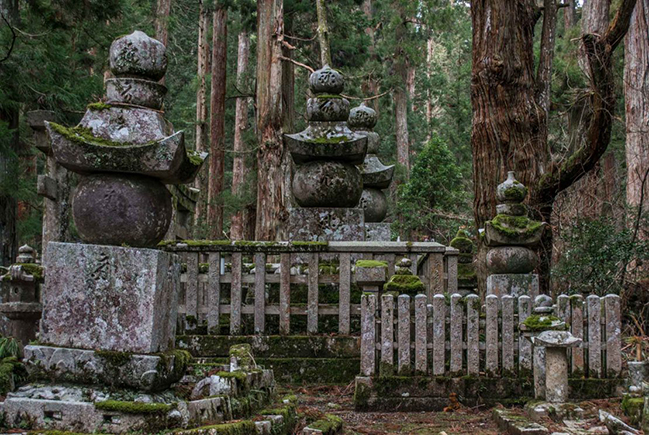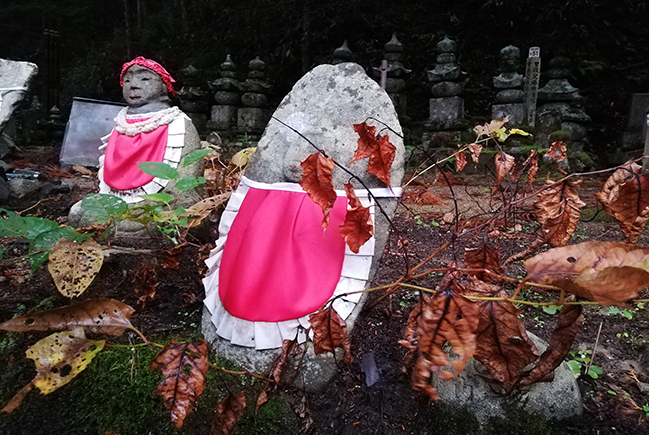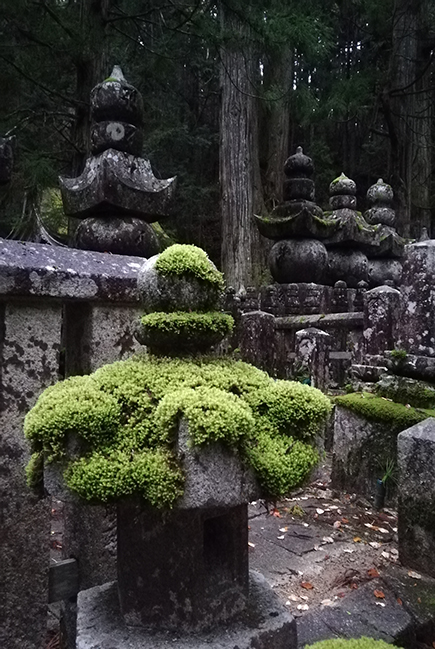Koyasan, or let it be
When I reminisce about my travels, my memories often take the form of sharp flashbacks. I probably suffer from some neurological dysfunction that doesn’t allow me to bring entire days back to light. Or maybe I’m probably just getting old and the head simply wanders.
The first detail that comes to mind of the days in Koyasan is the pyjamas they gave us at the temple. It sounds idiotic, right? I think of pyjamas within a story that will entail ceremonies before the sun rises and dead who are not dead, and so on.
Instead, those loose trousers and that comfortable tunic of my favourite colour come back to memory first: for a moment I see my travel companions and I wear them as soon as we enter the room as if we are in a rush. There’s no rush on Mount Koya. The alienation I felt in Tokyo has dissolved. We laugh happily in a low voice so as not to disturb the other guests, we laugh happily as one can happily laugh only when one travels, and then we try to do two or three asanas which obviously, given our giggles, we cannot keep for more than 10 seconds.
The second thing that comes to mind about the experience in shukubo is the pitter-patter of footsteps in the corridors. The floors of the temple are covered with a warm carpet that cushions all the noises. Shoes are left at the entrance of the temple where we stay: they are all there together and I like to think that they also get to know each other a little while they wait for us settled in these wardrobes that look like a small town. In the silence, which gets interrupted only by a few words exchanged in a low voice, the steps turn into the wind and it feels like my breath lengthens, slows, and relaxes into a gentler pattern.
The third memory is the bridge at the beginning of Okunoin. The entrance to the necropolis is a few steps from our temple: Okunoin is the largest cemetery in the Japanese archipelago. Those who rest underground up here, however, are not dead: they are just waiting for Kobo Daishi, the founder of the Shingon Buddhist community of Mount Koya, to exit his state of meditation when the Buddha of the Future appears on Earth.
Before entering, we stop and bow as a sign of respect towards Kobo Daishi. Do visitors cross two dimensions there? Maybe. I don’t know how many worlds there are, parallel or not to this, I don’t know if other realities really exist, but in front of that bridge, I feel once again that we are all connected, past present and future, those who are gone on and those who are still here.
The nearly 200,000 graves that I photograph at the end of that first day in Koyasan are nothing more than 200,000 stories, 200,0000 lives and faiths and loves and losses and friendships and bizarre and questionable choices. Moss covers many of them and climbs up the tall trees that accompany me along the cobbled streets of this immense cemetery.
I find myself smiling every time I meet small Buddha statues donning their red bib: I feel some sort of tenderness while I’m looking at that piece of cloth because I know it’s a sign of maternal protection towards their children here, or in the afterlife. Everything seems incredibly human, in this incredibly otherworldly place.
The fourth memory is the alarm clock going off at 4 on the last morning in Koyasan. We roll up our futon and, despite the few hours of sleep, we are ready in a couple of minutes. In a little while, we will cross the night and we will walk across the bridges to arrive at the morning ceremony in the most sacred part of this mountain.
In front of the pavilion of the Lanterns, some of which have apparently been burning for more than 900 years, we meet only other 4 worshippers: we look at each other and we smile to each other in the dark. They know that we do not have the faintest idea of what we must do, and we know that we can trust them to guide us. When we travel, we often meet without speaking, without having a common language or culture.
The distressing isolation I felt in Tokyo seems light-years from now. All around us, there are dozens of Buddha statues of various shapes and colours: we wash one of them by using a copper ladle and the flowing water, although it’s unclear where it comes from.
Then, I hear a rustle of footsteps and the sound of a sliding door: 3 monks appear in the dark, two are novices while an older monk leads the small procession. The other devotees signal that we must follow them towards the Gobyo, which is the temple in the background where Kobo Daishi has been in a perpetual state of meditation for centuries and where no one can go.
Every day, meals are placed outside this door. We are silent, but sutras are carried over by the wind. There’s no imposition there: everyone is free to present themselves as best as they can: we join our hands and we look into our hearts in front of this holy door.
The worshippers signal us to enter the temple after this first part of the morning ceremony is over. Lights and shadows, trills of light bells, movements reduced to a minimum: everything merges in memory there. Time ceases and I no longer care to understand: my head is emptying and it begins to cradle to the sound of chains of words and songs that I don’t understand. I simply let everything be. Let it all happen.




